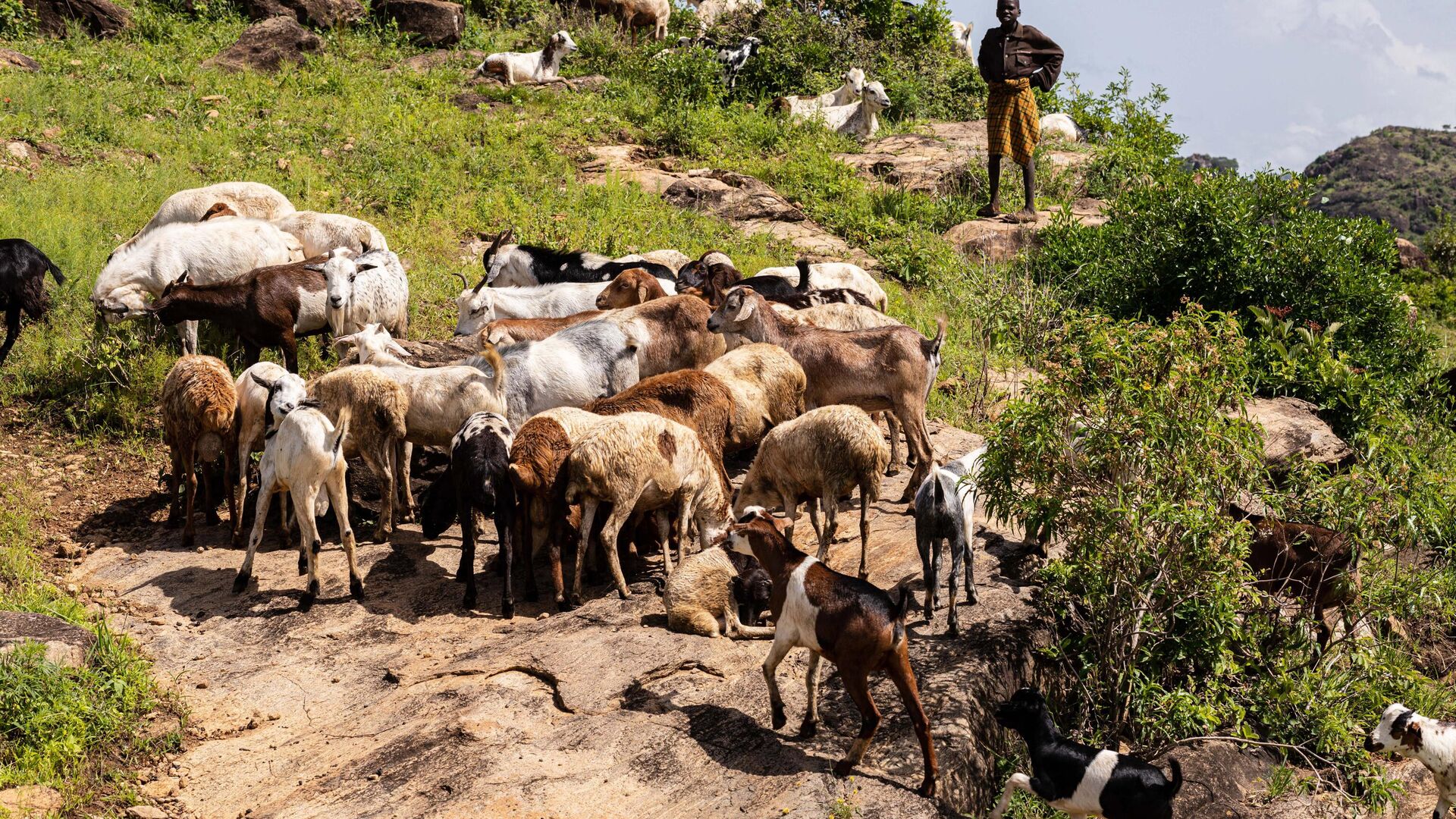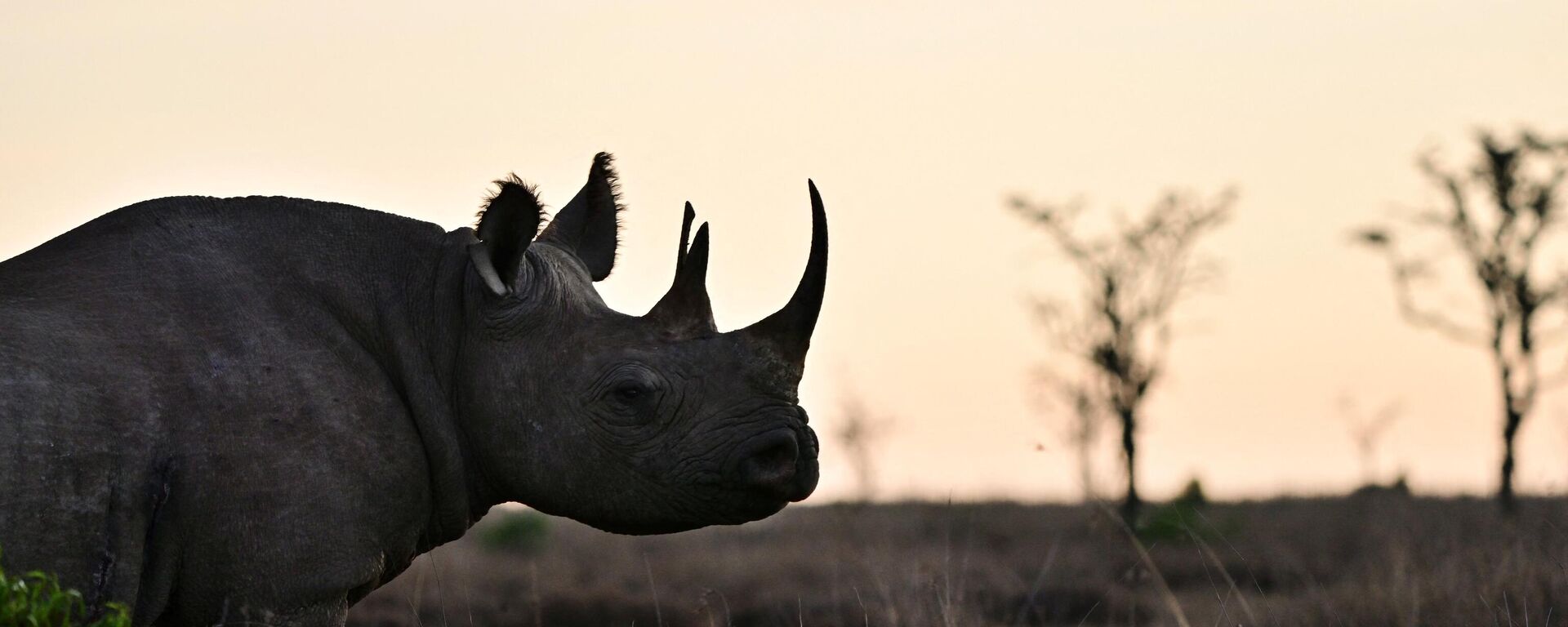https://en.sputniknews.africa/20240118/ugandan-scientists-reportedly-developing-improved-goat-breeds-to-boost-meat-production-1064685259.html
Ugandan Scientists Reportedly Developing Improved Goat Breeds to Boost Meat Production
Ugandan Scientists Reportedly Developing Improved Goat Breeds to Boost Meat Production
Sputnik Africa
According to the research, approximately 39% of households in Uganda are known to own goats. Goat farming has the potential to significantly improve the... 18.01.2024, Sputnik Africa
2024-01-18T17:41+0100
2024-01-18T17:41+0100
2024-01-18T17:59+0100
sub-saharan africa
uganda
south africa
east africa
animals
kenya
nature
farmers
economy
https://cdn1.img.sputniknews.africa/img/07e8/01/12/1064686164_0:160:3072:1888_1920x0_80_0_0_59f6bc0d9a3786673f03477ffcc44eda.jpg
Ugandan scientists are developing a new fast-growing breed of meat goat that will improve the productivity of indigenous breeds, which often have small bodies and a slow growth rates, the local media reported on Thursday.Three local breeds will be crossed with South Africa's Kalahari Red breed, which is generally used for meat production.The local breeds — Mubende, Kigezi and Small East African — should be a perfect match for the Kalahari Red. The Mubende can survive for several days without water, making them drought tolerant, and are better adapted to hot weather, while the Kigezi breed is more dairy oriented.According to Mulindwa, the scientists are in the process of developing a pedigree by studying the lineage of both the sire and dam. They will also begin collecting performance data on these animals, focusing on their growth and weight.Goat genetic resources have a significant socio-economic impact in various rural areas worldwide by contributing to food and nutrition security. They generate income through the sale of animals and their products.Goats have the ability to adapt to and effectively utilize low quality food sources, enabling them to survive in harsh environments. People can improve their financial situation by selling the animals and their products such as milk, meat and skins.Goats are an invaluable resource for subsistence farmers because of their ability to withstand harsh environments and adapt to low quality fodder.However, reports said that in order to obtain better varieties of goats, Ugandan farmers typically import bucks from South Africa to mate with females. According to the media, smallholder farmers cannot afford the nearly $1,000 cost of a single imported male.Mulindwa reportedly reflected that the goat improvement program will provide a solution to the farmers' problems.Uganda's neighbor, Kenya, is also taking steps toward breeding. But not goats, rhinos. On Wednesday, the country launched its rhino translocation program, which will see 21 black rhinos transferred to the Loisaba Conservancy for breeding.
https://en.sputniknews.africa/20240117/kenya-launches-relocation-of-21-endangered-black-rhinos-to-new-conservancy-for-breeding-1064659629.html
uganda
south africa
east africa
kenya
Sputnik Africa
feedback@sputniknews.com
+74956456601
MIA „Rossiya Segodnya“
2024
Christina Glazkova
https://cdn1.img.sputniknews.africa/img/07e7/0b/07/1063380906_0:0:673:674_100x100_80_0_0_79628b4d0cd9f29291a57aa13bbf9e7a.jpg
Christina Glazkova
https://cdn1.img.sputniknews.africa/img/07e7/0b/07/1063380906_0:0:673:674_100x100_80_0_0_79628b4d0cd9f29291a57aa13bbf9e7a.jpg
News
en_EN
Sputnik Africa
feedback@sputniknews.com
+74956456601
MIA „Rossiya Segodnya“
Sputnik Africa
feedback@sputniknews.com
+74956456601
MIA „Rossiya Segodnya“
Christina Glazkova
https://cdn1.img.sputniknews.africa/img/07e7/0b/07/1063380906_0:0:673:674_100x100_80_0_0_79628b4d0cd9f29291a57aa13bbf9e7a.jpg
uganda, south africa, east africa, animals, kenya, nature, farmers, economy
uganda, south africa, east africa, animals, kenya, nature, farmers, economy
Ugandan Scientists Reportedly Developing Improved Goat Breeds to Boost Meat Production
17:41 18.01.2024 (Updated: 17:59 18.01.2024) Christina Glazkova
Writer / Editor
According to the research, approximately 39% of households in Uganda are known to own goats. Goat farming has the potential to significantly improve the quality of life in rural areas.
Ugandan scientists are developing a new fast-growing breed of meat goat that will improve the productivity of indigenous breeds, which often have small bodies and a slow growth rates, the local media reported on Thursday.
Three local breeds will be crossed with
South Africa's Kalahari Red breed, which is generally used for meat production.
“We started with assembling Kalahari, which we imported from South Africa. At the next stage, we want to acclimatize them to our environment because where they are bred, the humidity is so low and yet here it is so high,” Henry Mulindwa, the head of the goat improvement programme at Uganda's National Livestock Resources Research Institute told local media.
The
local breeds — Mubende, Kigezi and Small East African — should be a perfect match for the Kalahari Red. The Mubende can survive for several days without water, making them drought tolerant, and are better adapted to hot weather, while the Kigezi breed is more dairy oriented.
According to Mulindwa, the scientists are in the process of developing a pedigree by studying the lineage of both the sire and dam. They will also begin collecting performance data on these animals, focusing on their growth and weight.
“The country will be in a position to generate crosses within a period of one to two years… But in the long-term – that is about five generations, we will have come up with a new stabilized breed, which will be registered as our own, and given out [...] for multiplication,” Mulindwa said, as cited by media.
Goat genetic resources have a significant socio-economic impact in various rural areas worldwide by contributing to food and nutrition security. They generate income through the sale of animals and their products.
Goats have the ability to adapt to and effectively utilize low quality food sources, enabling them to survive in harsh environments. People can improve their financial situation by selling the animals and their products such as milk, meat and skins.
Goats are an invaluable resource for subsistence
farmers because of their ability to withstand harsh environments and adapt to low quality fodder.
However, reports said that in order to obtain better varieties of goats, Ugandan farmers typically import bucks from South Africa to mate with females. According to the media, smallholder farmers cannot afford the nearly $1,000 cost of a single imported male.
Mulindwa reportedly reflected that the goat improvement program will provide a solution to the farmers' problems.
Uganda's neighbor,
Kenya, is also taking steps toward breeding. But not goats, rhinos. On Wednesday, the country launched its rhino translocation program, which will see 21 black rhinos transferred to the Loisaba Conservancy for breeding.



